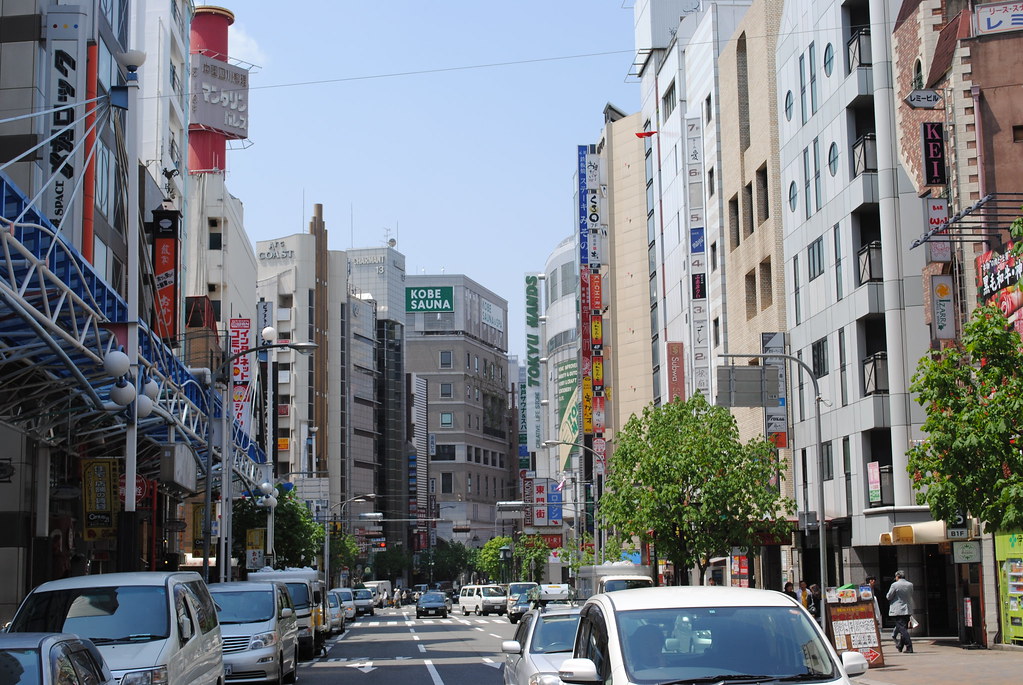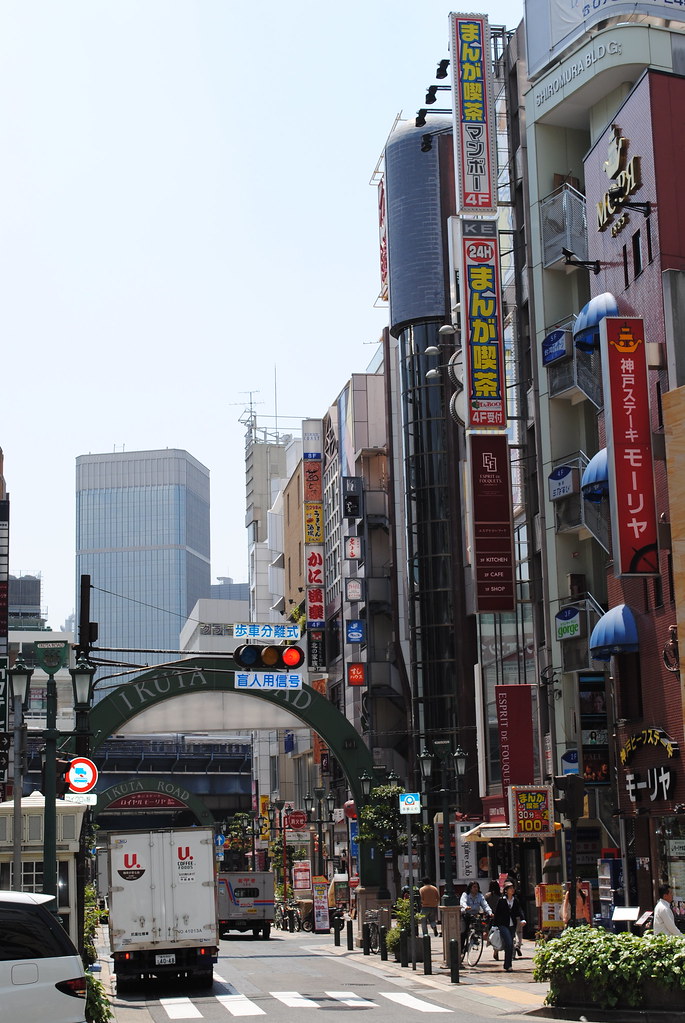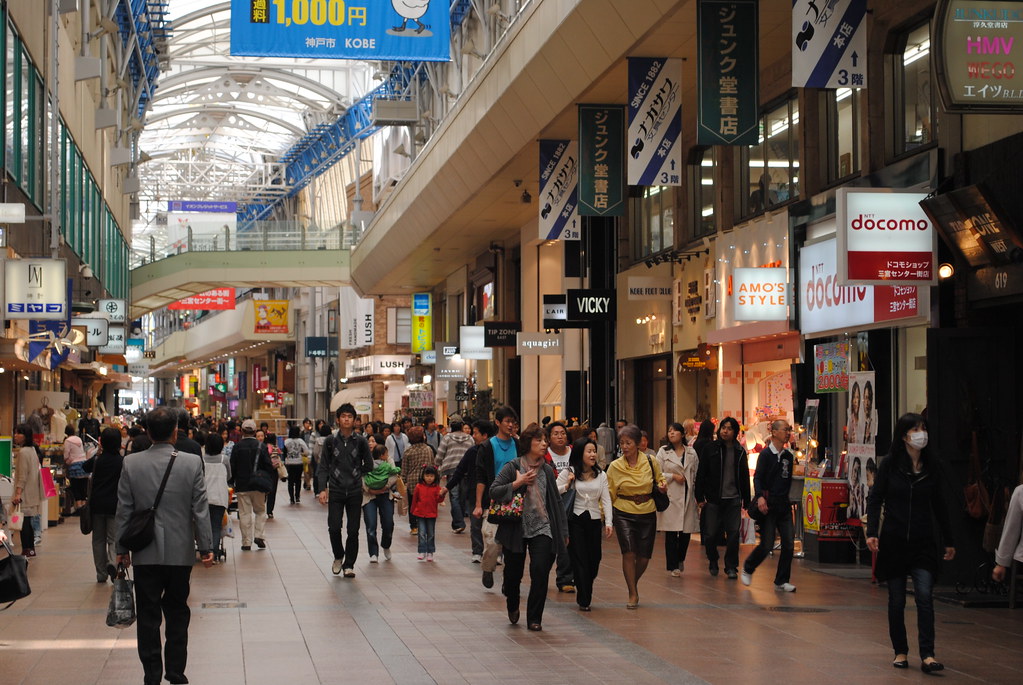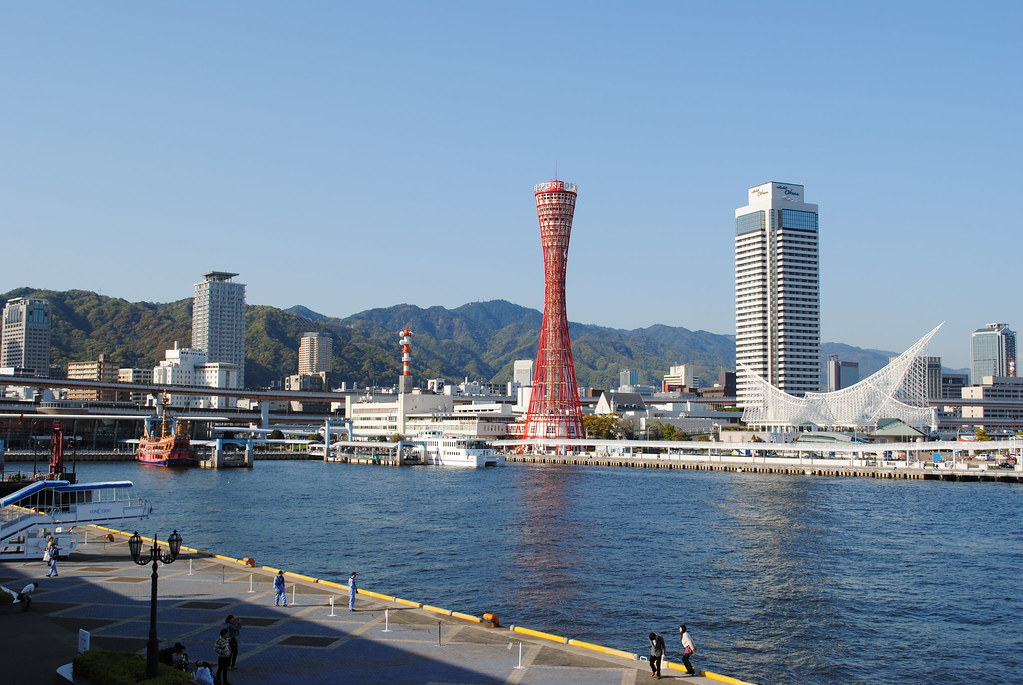It may be a bit redundant to call 神戸 a "place to visit in Hyogo", because chances are that if you come to Hyogo, you'll at least pass through. Nevertheless, I think it's time we had a bit of a look at the capital city of 兵庫県 (ひょうごけん - Hyogo Prefecture), my home away from home.
神戸 is a port city about the same size as Perth in terms of population, and it has the same relaxed and easygoing feel to it. In my opinion, 神戸 to 大阪 (おおさか - Osaka) is like Melbourne to Sydney or even Fremantle to Perth City - an atmosphere more like a cultural hub than a big city. When people talk about 神戸 they usually mean the central area of the city, known as 中央区 (ちゅうおうく - chuoku - Centre ward) - one of the nine 区 (く - ku - wards) 神戸 is broken into. Just briefly, the others are:
西区 - にしく - West ward
北区 - きたく - North ward
垂水区 - たるみく - Tarumi ward
須磨区 - すまく - Suma ward
長田区 - ながたく - Nagata ward
兵庫区 - ひょうごく - Hyogo ward
灘区 - なだく - Nada ward
東灘区 - ひがしなだく - East Nada ward
I live in 東灘区 and work in 灘区, 須磨区 and 中央区. Cities are always broken up into 区 in Japan - it helps with addresses and separates big areas up into manageable chunks. In the case of 神戸, most have something special about them which you might want to find out more about. ポートアイランド (Port Island) and 六甲アイランド (Rokko Island) are also very interesting - two man-made islands that extend 神戸 south towards 神戸空港 (こうべくうこう - Kobe Airport). For the moment however, I'm going to focus on 中央区 - it's the commercial and entertainment heart of 神戸 and probably the most interesting for you.
The most notable part of 中央区 are the adjoining precincts of 三宮 (さんのみや - Sannomiya) and 元町 (もとまち - Motomachi). Interestingly, 三宮 means "the third temple". I always thought it meant "the three temples", referring to 生田 (Ikuta), 長田 (Nagata) and 湊川 (Minatogawa), which are the most famous 神社 (じんじゃ - jinja - shrines) in 神戸, but apparently not. There are apparently other districts named as such, continuing the number pattern - 二宮 (Ninomiya), for example. I'm not sure how many of them there are - none of the others are nearly as famous as 三宮.
As far as shopping, eating and finding exciting things to do go, there are few places with a bigger range than 三宮. All the major train lines have stops at all three and there is a 新幹線 (しんかんせん - Shinkansen) stop nearby, making it very convenient to get around.
The first thing I noticed about 三宮 and 元町 was the height of all the buildings. Where in Perth there's a tendency to sprawl out sideways, 神戸 has taken to climbing up. Cafes, bars, shops and boutiques stretch right up to the extent that most buildings in the area have a guide to explain exactly what's on each floor. Shops can be tucked away in tiny corners, in secluded alleys or on the 8th floor of a closed looking building and still be full of people. Every kind of restaurant and shop you can imagine is available, plonked around haphazardly waiting to be discovered. Whenever you go out, you can always guarantee you'll find something new if you look hard enough - it's great.
In both areas, but 元町 in particular, there are also covered shopping districts that snake underneath the train lines, between streets and in their own designated areas. Some are wide open spaces with international chains, while others are tiny corridors full of standing-room-only restaurants and one-off boutiques. Some of these connect to 南京町 (なんきんまち - Nankin machi). This is the Chinatown of 神戸, full of dozens of restaurants and souvenir shops. Again, it's hard to wander around without discovering something new every time you visit.
中央区 also contains ハーバーランド (ha-ba-rando - Harbourland) which is more of a tourist area, overlooking the harbour of 神戸 as the name suggests. It's geared for pedestrians, which means you can get off the train and walk through to the harbour side without losing sight of the shops, cafes and restaurants (or leaving the air conditioning in summer). Keep walking, and you'll emerge at a huge boardwalk on the water, and the view of the city definitely makes the walk worthwhile.
The big red tower is 神戸ポートタワー (Kobe Port Tower) - an observation deck that you can climb up to get a view of the city. It's particularly spectacular at night. You can also go on lunch and dinner cruises around the harbour if you want to get a closer look at anything. Failing that, you could settle for the mini amusement park that sits next to the harbour. You're never too old for this stuff.
Needless to say, I'm a big fan of 神戸 and I don't think any trip to Hyogo would be complete without at least a day wandering around. It has all the fun and excitement of 大阪 without being too big and unwieldy - it's easy to get around, easy to enjoy and easy to live in. Make sure you come and say hello if you're in the area - I'll show you why.





No comments:
Post a Comment
If you have any questions or additions, I would love to hear from you. I may not know the answer, but I'll do my best to find out in any case! You can post anonymously if you like, but abusive/unintelligible/inappropriate comments will not be published.